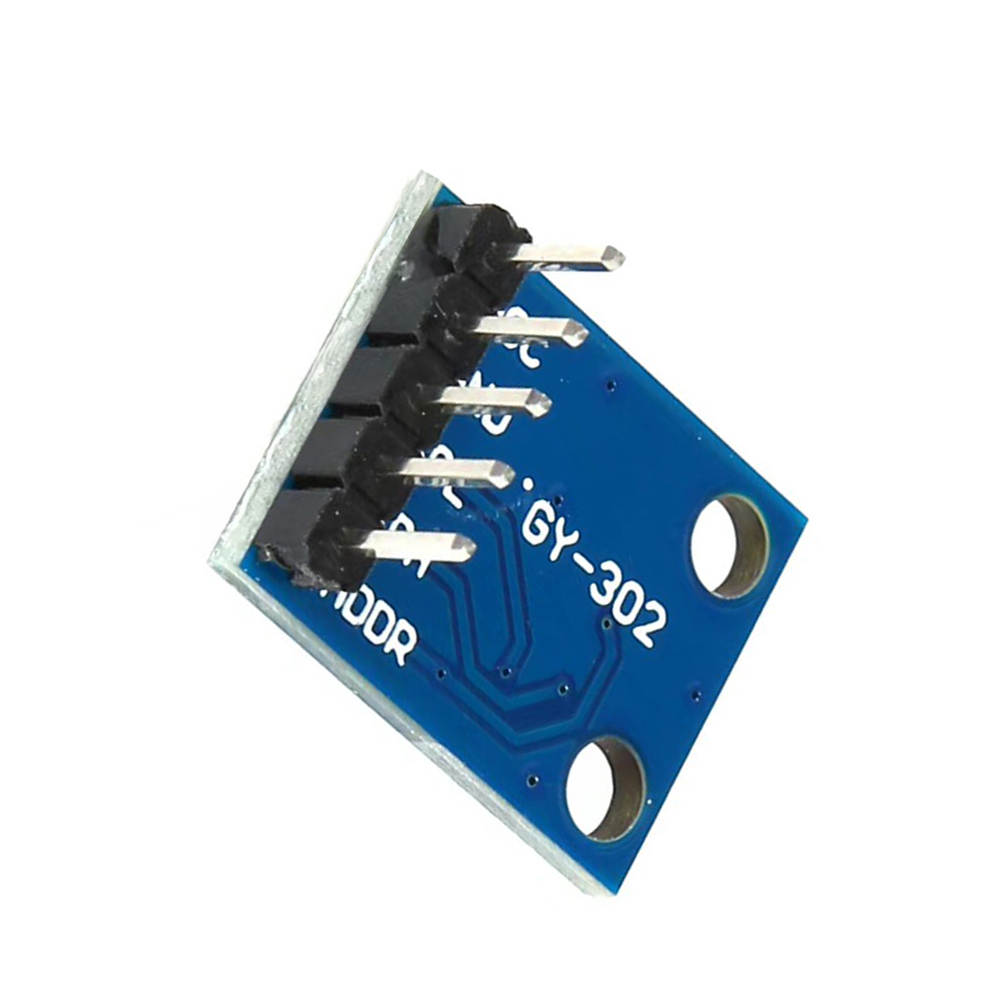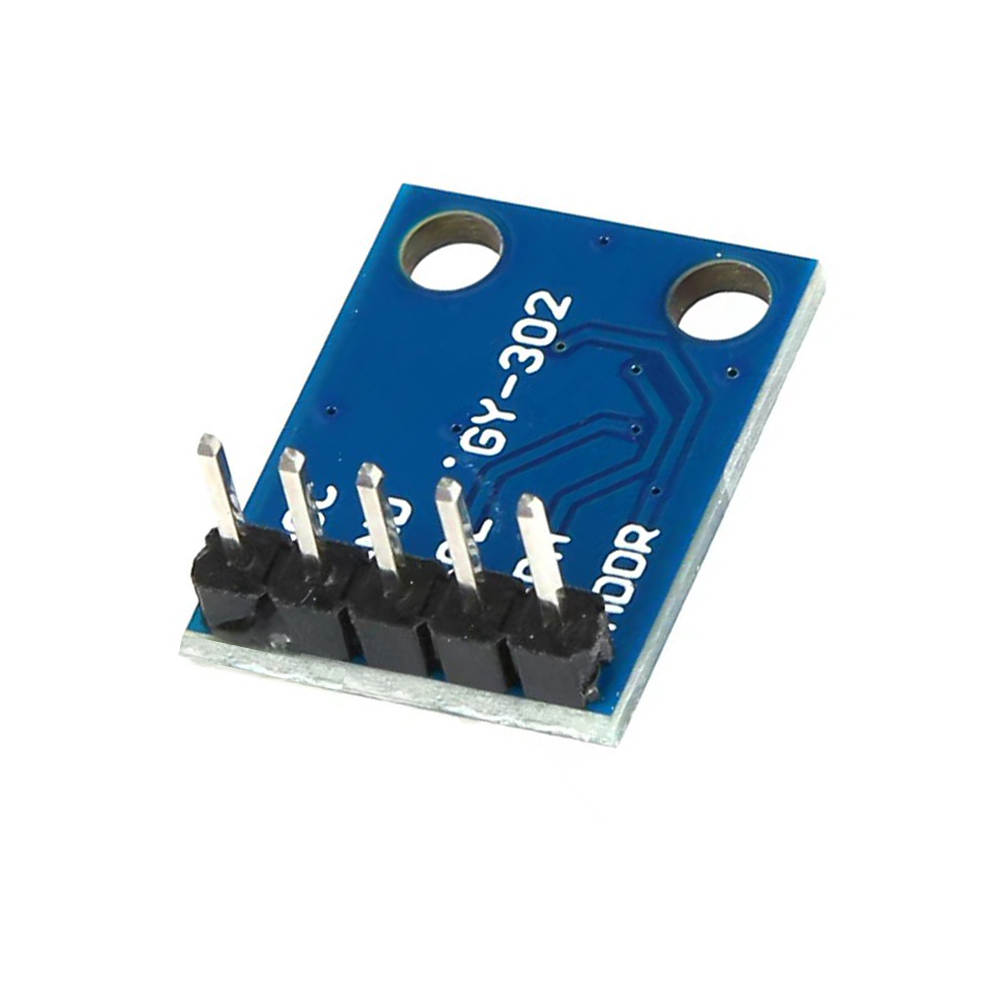Customer Reviews
See what other customers have to say about their purchase.
Decently accurate Lux sensor
It has been working for me just fine for a few months now just to control some LED lights based on outside brightnessIf you are new to these or just havent played around much with microcontrollers just know they dont provide much documentation I would recommend doing some googling on the BH1750 light sensor and how you can incorporate it properly into your projects
Presoldered header for easy breadboarding
I attached it to a Arduino Leonardo With VCC on 33V GND and SCLSCA attached I ran the hp1750 BareMinimum sketch On the serial console I could see values being printedI compared the output with my UniT UT383 Lux meter and generally they are in the same ballpark For example with both meters side by side I shined a flashlight from about 2 feet away The UT383 read about 3200 lux while the BH1750 module read 2950 luxIt looks like doing accurate analysis with this type of meter is a bit more complex and requires some extra considerations Out of the box though its very easy to get going for simple comparative analysisFrom what I understood there is a tradeoff of resolution maximum lux and speed of measurement You can make a decision about how to set the Quality and MTreg settings based on your own requirementsSince this is supposed to be 5V tolerant I also tried powering it with 5V and operationvalues received were the same On the board I can see the VCC pin is connected to a SOT233 chip marked 662K Search indicates this might be XC6206P332MR 33V voltage regulatorThe circuit seems to lack proper level shifters for the I2C data lines It might prove problematic with some I2C busses but I only tried it on the Arduino
Accurate
So long as you follow the directions for using whatever library you choose this is an accurate sensor
Measures a very large range accurately
Nifty little module when you need to measure light quantitatively The unit measures light in LUX which is nice I used the Adafruit example code and it worked well to get it going The unit is well made and very reasonably pricedI used mine on an STM32 blue pill board Id recommend it to anyone
Works good
I am very happy with this itemI ordered this to sense when my laser engraver door has been opened While overkill it worked perfectly in that role I used it with an Arduino to send a message to my computer that in turn send me a text message if the engraver door is opened during a cutting operationThe quality is on par with what you would expect to find for this type of module and Arduino documentation and code were easy to find all over the internetId definitely recommend this item to friends and colleagues
easy to use high accuracysensitivity light sensor module
Despite its ease of use it comes in the bare module WITHOUT any cable nor specificationstutorial Fortunately its easy to find its usage onlinePretty straightforward it only requires minimum 4 pins connection VCC GND SDASCD of the I2C Reading is digital ready and much better than using LDR in case you want to take the measurement in luxI tested it with Raspberry Pico no problem in working but unable to confirm its lux accuracy but it appears reasonableGreat addition to IoTDIY project in measuring light intensity in high accuracy requirement
Works perfectly but no documentation at all
This sensor works on both 33 and 5v supply unlike some others The results were same on both My concern is there is absolutely no documentation of any sort on it I understand its a product for nerds but some paperwork would have been niceWith that out of the way what you need to do is Google and there are plenty of guides to make this work Amazon removes any links in the review so I wont be able to post it but its easy enough even for kids I used it on a breadboard connected to Raspberry Pi 4B
Simple Yet Sensitive Ambient Light Sensor
I recently tested this handy little light sensor module for use in IoT and microcontroller projects needing luminance measurements It worked flawlessly for detecting relative ambient light changes using an Arduino board The GY302 module features a BH1750FVI IC chip and comes presoldered for easy wiring with pins that work perfectly with standard breadboard connection wires I connected it to an Arduino Uno R4 WiFi using just the two I2C pins and powerground The included mounting holes made securing it straightforwardThe sensor proved very responsive to subtle light adjustments in my tests Without calibrated equipment I couldnt validate the absolute lux accuracy claims However sensitivity and repeatability were excellentthe key criteria for my use caseBetween the handy form factor presoldered pins mounting holes and sharp sensitivity this little sensor impresses Its a great way to add ambient light detection to your projects Integration takes minutes with the proper BH1750 library installed See the Arduino sketch I included to below to see what it takes to integrate this In the Arduino library manager install the library BH1750 By Christopher Laws to use this test scriptinclude BH1750hinclude WirehBH1750 lightMetervoid setup Serialbegin9600 Wirebegin lightMeterbegin SerialprintlnFBH1750 Test beginvoid loop float lux lightMeterreadLightLevel SerialprintLight Serialprintlux Serialprintln lx delay1000
Well manufactured board convenient for hobbyistprototyping use
SHILLEHTEK makes nice boards for development and testing This is well manufactured Though they provide no documentation the chip sheets are always easy to find because these are highvolume common partsI configured this under Nuttx and while there were no native drivers I was able to draft a few lines of mechanical i2c code from public Arduino drivers and confirm basic operation This is a nice digital sensor that didnt jump and jitter around the way analog light sensors doRecommended
Very easy to use
I love how this module isnt simply a breakout board its a fully functional interface for the sensor that operates on both 33v and 5v supplies There are 5 pins but you only need to use 4 if you dont need to change the I2C address the address pin can be left open which is what I didI tested on an Uno using the BH1750 Arduino IDE library by Christopher Laws Everything was left at default settings for my test which consisted of taking a simple getLightLevel reading in a somewhat dim room with an overhead table lamp and then with the table lamp brought within inches of the sensor I cant comment on accuracy but depending on the mode used its supposed to be accurate down to 1lux with a 05lux resolution Even moonlight is well below 1lux so you wont be using this for accurate readings in very low light so that resolution is plenty precise in most other applicationsSpeaking of modes you can set continuous or onetime reading modes onetime is for lowpower applications as it shuts down after a reading with different measurement times with longer measurement times giving more precise readingsThe sensor by itself is over 4 unless bulk ordering from reputable sources anyway so adding a couple bucks for such convenience in a such a small package is easily worth it Ill be removing the pins when I use this for my application but thats about the only changes Ill need to make
A solid performing BH1750 with presoldered pin header
I pushed this BH1750 module into a breadboard and hooked up four of its five pins to my Arduino Uno and ran an example sketch to test it out The Lux readings come through clearly and I didnt notice any problems with the hardware whatsoeverIts always very convenient to have the pin header already soldered on The item also came in an antistatic bag with the pins pushed into a block of foam
Working on Pi 3B
This light sensor works great Im using it to control a lighting automation that I dont want to run when there is already enough light in the room So this is effectively working as a master onoff switch for my application Definitely 3D print an enclosure to mount this sensor in a place that makes sense because stuck to a Pi isnt really an ideal spot for sensing light especially when the Pi is hidden somewhere where there isnt normal light I found a few tutorials online on how to wire and code up this sensor for whatever I want to do Super cheap and tiny making it easy to install
great light intensity module
This works great It is easy to interface to the Arduino or Raspberry Pi I was quickly able to locate code and tutorial online to start taking readingsThe module is built well I already have some projects in mind to start taking advantage of the light intensity readings such as a sun tracker
Easy to get running on and arduino
I wanted this for an Arduino project with two i2c devices Library for the BH1750 worked with the device right off the bat without any troubles There are tons of source examples all over the web and I had no problem implementing it to my project The quality of the board itself is good with no visible problems Header comes presoldered to the board
Its a lot smaller than it looks
It works exactly as advertised But its a lot smaller than the pictures make it look Maybe a bit too small it will be hard to mount on anything
good quality works for my automated garden
The Light Intensity I2C IIC Module is a great product it came well packaged and the soldering was neat I appreciate the protective foam that covered the pins which saved them from any damage during the deliveryI want to use this module for my automated garden project I can adjust the lights to turn on before the sun rises turn off when the natural light comes through the window and turn on again after the sun sets This way my plants will get more light every day The module is compatible with my Arduino I must work on the code to get the result Im looking for
Very easy to use
Great for Arduino I2C interface and reads in lux so no lookup table required Very small PCB Close to human eye spectral response Easy to hook up and Arduino libraries are available on the web Great part if you need to know visible light levels
Excellent quality and well packaged
I was immediately impressed when I received this because the metal posts were packaged into a bed of medium foam which protected the critical attachment surface during transit Once plugged into my Arduino board it was easy to program and does exactly what you expect Great find
Nicely constructed
The soldering on the chip is nicely done and everything appears to be well constructed I havent been able to test it thoroughly yet but Id be surprised looking at it that it wouldnt work as expected I also like that they shipped it with the pins in a foam block to protect them Overall Im happy with it
Decent Quality
I havent had a chance to use this yet but it seems decent quality It arrived undamaged and in an antistatic bag Should work well to automate things based on brightness levels
I2C interface
The I2C interface makes this light sensor easy to add to an ESP8266 project






